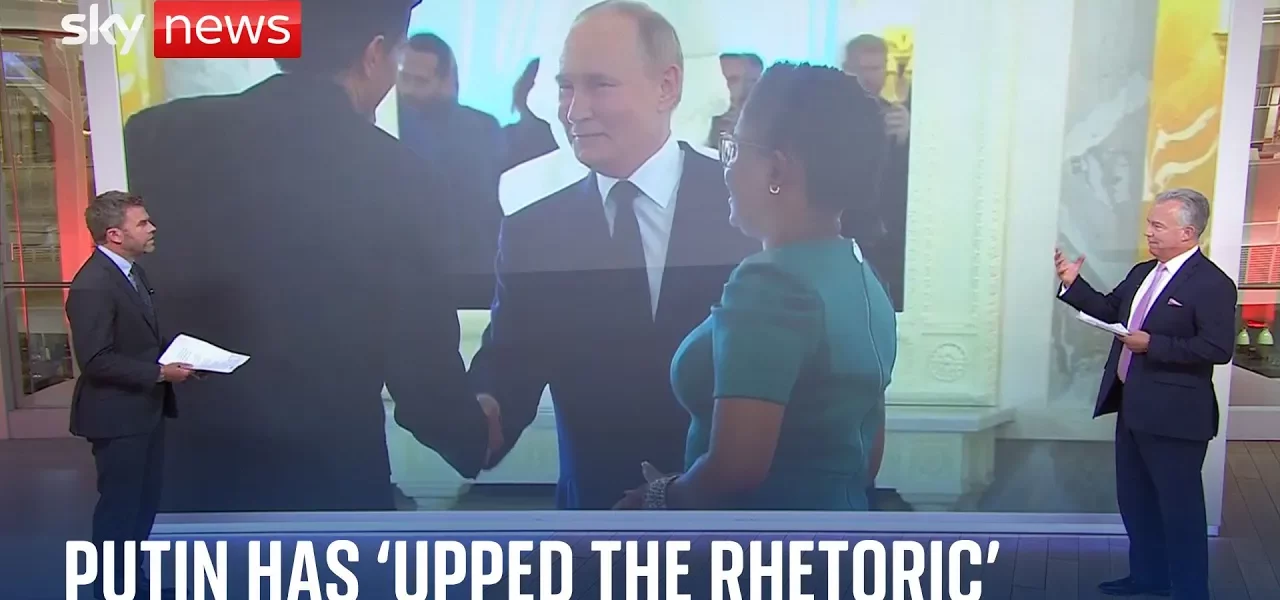Putin’s Warning to NATO Countries Over Long-Range Missiles

This article provides a comprehensive overview of President Vladimir Putin’s recent warning to NATO regarding the potential implications of Western long-range missiles being used within Russian territory. We delve into the military analysis, geopolitical context, and the evolving landscape of international relations.
Introduction
The ongoing tension between Russia and NATO has reached new heights following President Vladimir Putin’s stern warning regarding the deployment of Western-made long-range missiles in Ukraine. This warning raises critical questions about the potential for escalation and the nature of military engagements in the region. As the situation develops, understanding the implications of these statements is essential for grasping the broader context of global security and military strategy.
Putin’s Escalating Rhetoric
In recent statements, President Putin has indicated that the provision of long-range missiles by the West could be interpreted as a declaration of war against Russia. This rhetoric has been steadily increasing over time, reflecting a strategic communication approach aimed at deterring Western support for Ukraine.
The Nature of Threats
Putin’s threats are not mere bluster; they signify a calculated strategy to push back against NATO’s involvement. Key points include:
- Warnings of direct military engagement with NATO forces.
- Accusations of NATO considering troop deployments in Ukraine.
- Strategic implications of Western military support for Ukraine.
Western Military Support to Ukraine
The West has been supplying Ukraine with various types of military equipment, including long-range missiles. Understanding what constitutes long-range weaponry is crucial in this context.
Defining Long-Range Weapons
Long-range weapons are typically defined as systems capable of striking targets beyond the immediate front lines. Examples include:
- Army Tactical Missile System (ATACMS): Range of about 200 miles.
- Storm Shadow Missiles: Range of approximately 155 miles, widely discussed in the UK.
- Joint Air-to-Surface Standoff Missile (JASSM): Air-launched with a range of up to 230 miles.
Comparative Analysis with Russian Missiles
In contrast, Russia has recently acquired Iranian missiles, such as:
- Fateh 360: Range of about 155 miles, similar to Western systems.
- Ababil: Capable of longer ranges, presenting a significant challenge to Ukraine.
Implications of Escalation
The implications of these developments are far-reaching. As military capabilities increase on both sides, the potential for miscalculation also rises.
The Role of Hypersonic Technology
Russia’s use of hypersonic technology poses a unique threat. Key characteristics include:
- Speed: Hypersonic missiles travel faster than five times the speed of sound.
- Tracking Difficulty: Their speed and trajectory make them challenging to intercept.
Western Support Dynamics
Despite Putin’s claims, the reality is that Western weapons are operated by Ukrainian forces. The provision of intelligence and training underscores the complexity of the situation.
Strategic Military Objectives
As the conflict evolves, understanding the strategic military objectives of both Russia and Ukraine is crucial. Putin’s focus on securing the Donbas region and the land bridge to Crimea remains paramount.
Key Objectives for Russia
Putin aims to achieve the following:
- Control over strategic territories in Eastern Ukraine.
- Establish a strong foothold before winter conditions complicate military operations.
- Leverage potential negotiations during significant political events, such as U.S. presidential elections.
Conclusion
President Putin’s warnings highlight the delicate balance of power between Russia and NATO. As tensions rise, the implications of military support for Ukraine and the rhetoric surrounding it must be carefully navigated. Understanding these dynamics is essential for policymakers and military analysts alike. For those interested in further exploring the complexities of international relations, consider reading our articles on geopolitical strategies and military technology advancements.
“`




